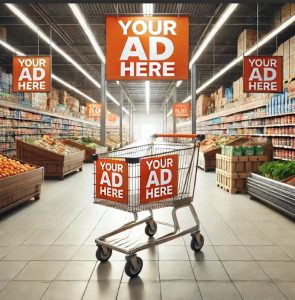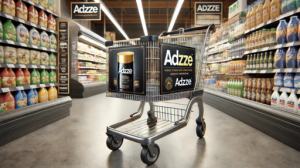In the competitive world of retail, especially within grocery stores, effective advertising can make or break a sale. As consumer expectations evolve, retailers are turning to innovative technologies to enhance the shopping experience, improve customer engagement, and increase sales. One of the most promising tools in modern grocery store advertising is in-store digital signage.
In this blog, we’ll explore how grocery store advertising can effectively utilize in-store digital signage for dynamic pricing strategies, the benefits of such approaches, and how this technology is shaping the future of retail marketing.
What is Dynamic Pricing in Grocery Store Advertising?
Dynamic pricing refers to the practice of adjusting the price of products in real-time based on various factors, including market demand, inventory levels, consumer behavior, and competitor pricing. In the context of grocery store advertising, dynamic pricing involves displaying changing prices through digital signage in-store. This allows retailers to optimize prices based on real-time conditions and offer targeted promotions that drive sales.
By using digital signage as a tool for dynamic pricing, grocery stores can automate this process and create an interactive shopping experience that encourages immediate purchases while improving profitability.
Benefits of Dynamic Pricing Through Digital Signage
Integrating digital signage for dynamic pricing in grocery store advertising comes with numerous benefits that directly impact both the customer experience and the store’s bottom line. Below are some of the key advantages:

Grocery Cart Advertising
Real-Time Pricing Adjustments
One of the most significant advantages of using digital signage for dynamic pricing is the ability to make real-time price adjustments. Grocery stores can display updated prices for items as soon as they change, without the need for manual price tags or label changes. This is especially useful for managing products with fluctuating prices, such as fresh produce or meat, where prices are often adjusted based on supply and demand.
Personalized Promotions and Targeting
Grocery store advertising through digital signage allows for more targeted and personalized promotions based on customer demographics, shopping behavior, and preferences. By integrating digital signage with in-store data collection systems, retailers can display personalized offers and pricing information tailored to the individual shopper.
Improved Inventory Management
Dynamic pricing helps improve inventory management by allowing grocery stores to adjust prices based on the available stock. Digital signage enables real-time updates on inventory levels, ensuring that prices are adjusted quickly in response to supply and demand fluctuations. This can help stores avoid situations where they overstock certain products or understock others.
Competitive Edge and Market Responsiveness
In the grocery industry, competition is fierce, and price sensitivity is high. Digital signage allows grocery stores to respond quickly to competitor pricing changes, ensuring they remain competitive in the market. If a competitor drops their prices on certain items, a grocery store can use digital signage to match or beat those prices on similar products.
Enhanced Customer Engagement
Another benefit of using digital signage for dynamic pricing is its ability to engage customers visually and interactively. Traditional paper price tags or signs can be static and uninspiring, but digital signage offers the opportunity to present prices in more dynamic, attention-grabbing ways. For example, a digital display can include animations, videos, or interactive features that capture the shopper’s attention and communicate the value of the product.
How to Implement Dynamic Pricing with Digital Signage in Grocery Store Advertising
To effectively implement dynamic pricing with digital signage, grocery stores need to follow a strategic approach. Here are some key steps to ensure success:
Integrate with Existing Systems
For digital signage to display dynamic pricing, it must be integrated with existing inventory management, point-of-sale (POS), and pricing systems. This ensures that prices are updated automatically in response to changes in inventory levels, demand, and external factors like competitor pricing. Retailers should invest in a unified platform that allows real-time data to flow seamlessly between their systems and digital signage displays.
Segment the Store for Targeted Advertising
Not all sections of a grocery store will benefit from dynamic pricing in the same way. For example, products like canned goods or packaged snacks may have more stable pricing, while items like produce or meats are more likely to fluctuate. By segmenting the store into different advertising zones, grocery stores can tailor their digital signage displays to show relevant dynamic pricing for each product category.
Leverage Consumer Data for Personalization
Personalized promotions and offers can be achieved by integrating digital signage with customer loyalty programs and data analytics tools. By analyzing past purchase behaviors, stores can deliver tailored content that appeals directly to individual shoppers. For instance, a customer who frequently purchases gluten-free products could be shown dynamic pricing or discounts on gluten-free items.
Test and Measure Effectiveness
As with any advertising strategy, it’s essential to test and measure the effectiveness of digital signage and dynamic pricing. Grocery stores should monitor metrics such as sales volume, customer engagement, and inventory turnover to assess how well their dynamic pricing strategy is performing. Adjustments should be made based on real-time data to ensure the strategy is delivering optimal results.





